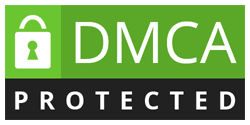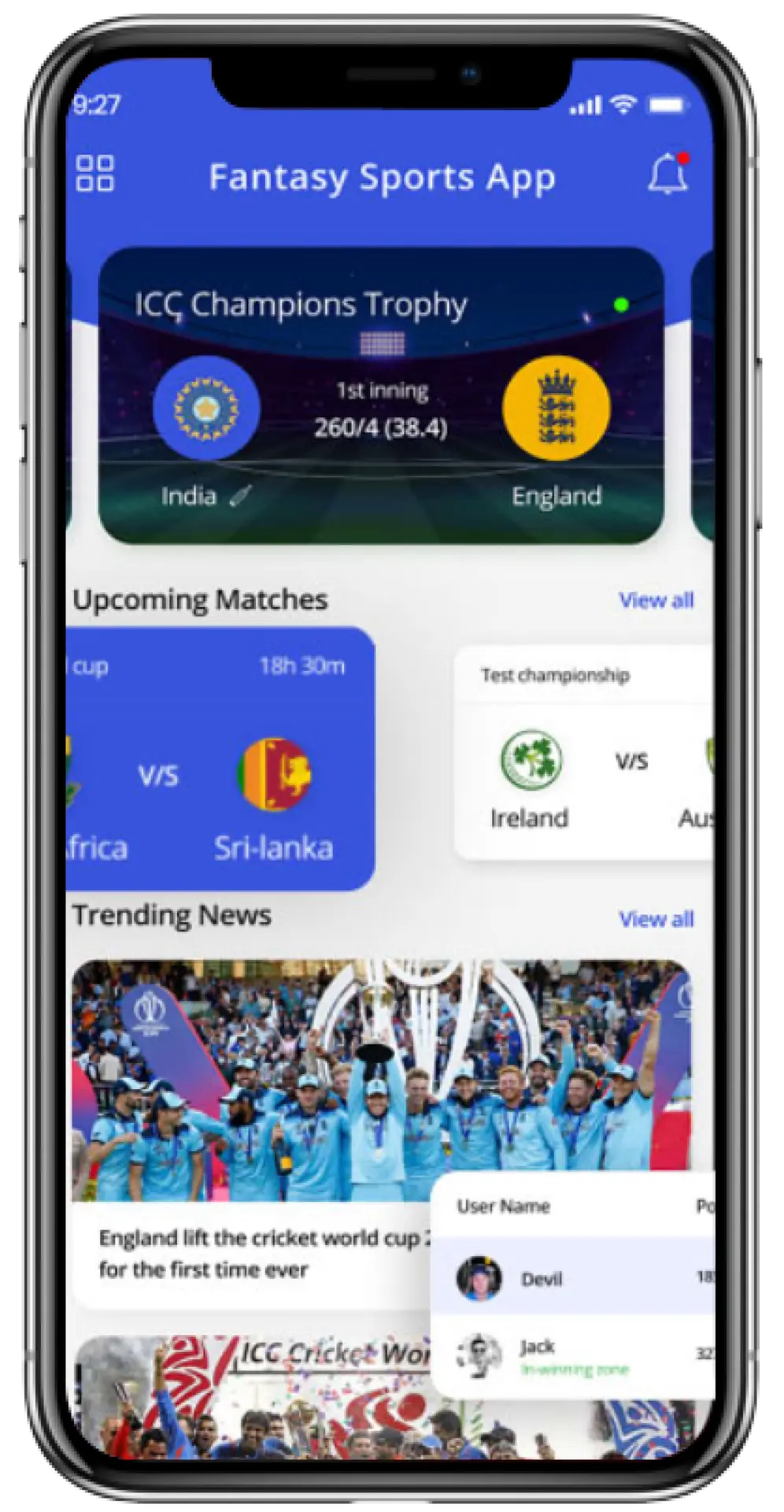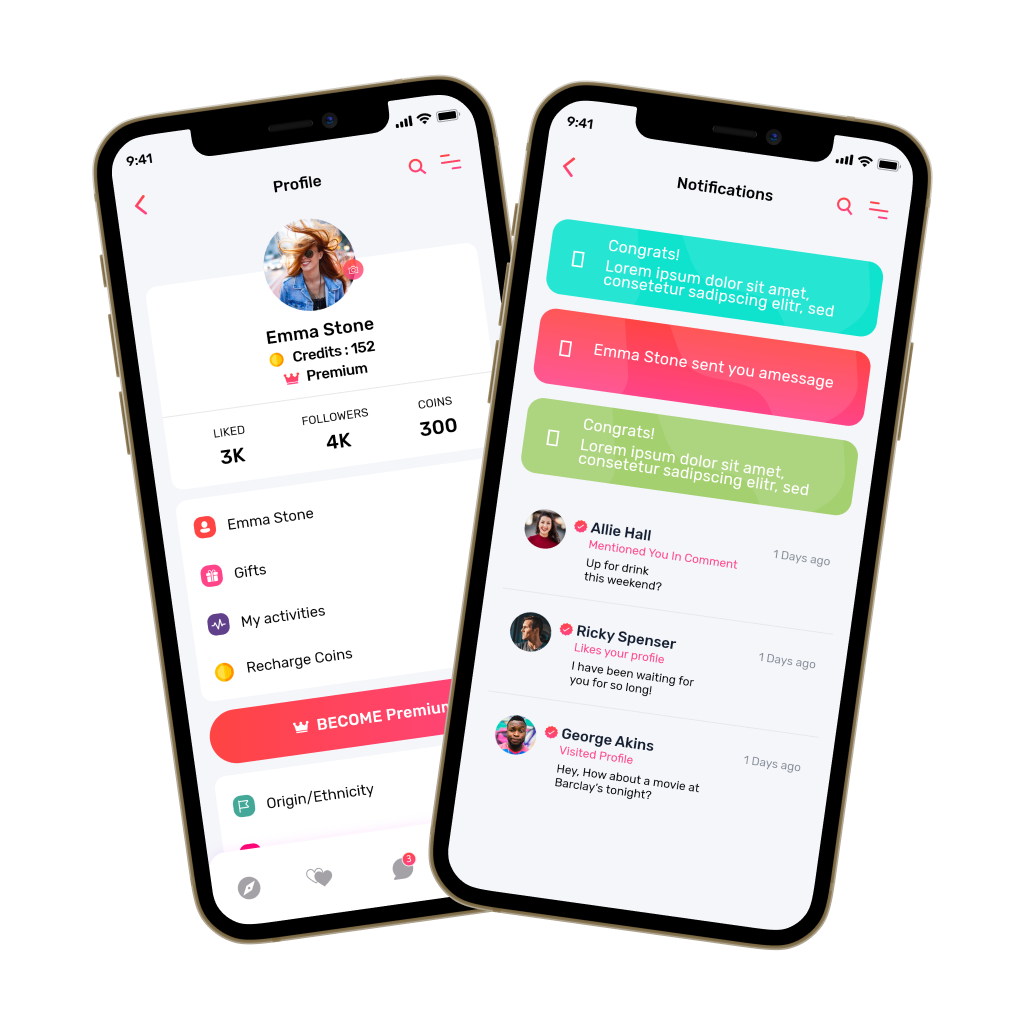Students are caught between classroom lessons and a huge stream of online content, so they look for something clear and structured. Parents want a space where learning feels steady and not stressful. Ed-tech businesses can see how fast the need for strong digital learning tools is rising. A well-built platform could meet this demand by offering short lesson modules and simple revision tasks that guide students step by step.
Modern learning apps like BBC Bitesize are making this shift unavoidable through interactive practice flows and intelligent real-time feedback systems. AI-driven tracking can also help learners move through each topic with more confidence.
We’ve built many learning platforms over the years, using advanced technologies like AI-powered adaptive learning and cognitive learning engines to create meaningful learning experiences. With this experience under our belt, we’ve put together this blog to walk you through the key steps to building a learning app like BBC Bitesize. Let’s dive in!
Key Market Takeaways for Learning Apps
According to StraitsResearch, the education apps market is entering a period of exceptional growth, climbing from an estimated USD 6.01 billion in 2024 to a projected USD 33.51 billion by 2033. With a forecasted CAGR of just over 21%, the sector is being propelled by the increasing adoption of mobile devices and the shift toward flexible, digital-first learning experiences.
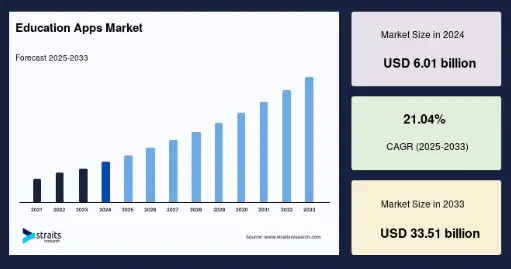
Source: StraitsResearch
A major driver behind this momentum is the steady integration of technologies such as AI, adaptive learning tools, and gamified features. These innovations are helping platforms deliver more personalized and engaging learning environments, meeting the expectations of students, educators, and self-paced learners.
Platforms like Khan Academy and Duolingo illustrate the impact of well-designed learning apps. Khan Academy has built a global audience by offering accessible, high-quality lessons across a wide range of subjects, while Duolingo has reshaped language learning with a playful, game-driven model.
Both continue to expand their user bases, underscoring the strong demand for effective digital education tools.
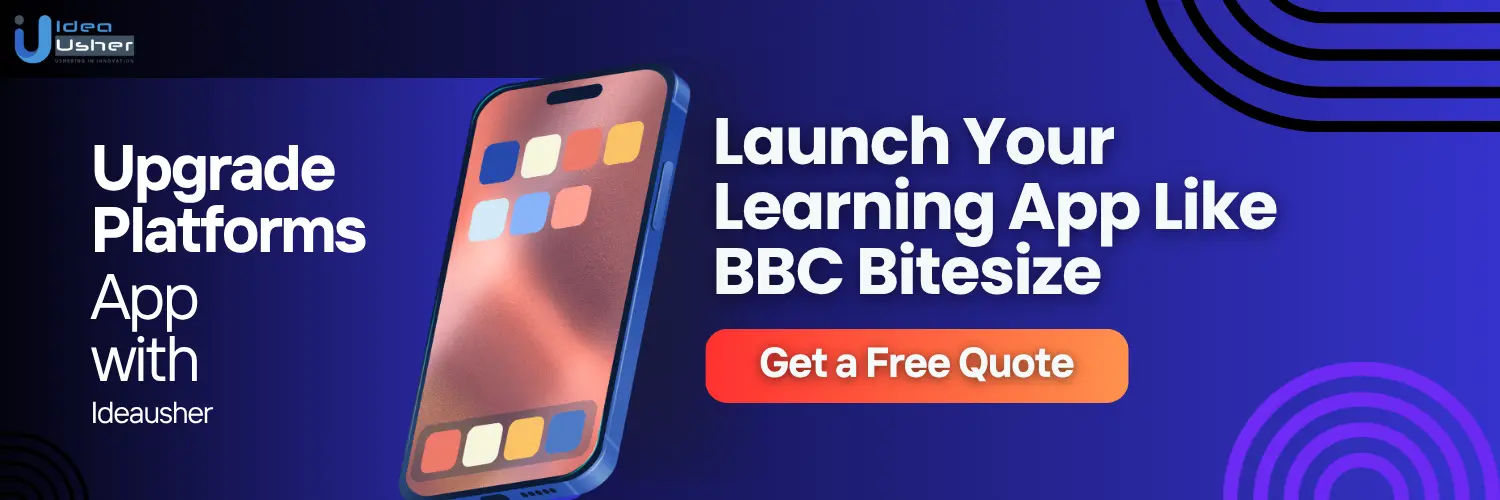
What is the BBC Bitesize App?
The BBC Bitesize app is a free learning platform from the BBC that provides curriculum-aligned study support for UK students. It breaks school subjects into simple, easy-to-digest lessons and offers videos, notes, and interactive activities designed to help learners revise efficiently for primary school, GCSEs, and Nationals.
Here are some of its standout features,
- Interactive quizzes: The app includes short quizzes and practice questions that let learners test their understanding and immediately see how well they’ve grasped a topic.
- Personalised learning setup: Students can choose their nation, school level, subjects, and exam board so the app tailors all content and revision materials to match their specific curriculum.
- Progress tracking: As users complete lessons and quizzes, the app records progress, allowing learners to see what they’ve finished and what still needs work, making revision more structured.
- Multiple content formats to engage with: Learners can interact with videos, text explanations, animations, and occasional games, switching between formats as they prefer.
- Topic-based navigation: Content is broken into small “bite-sized” chunks, letting users select exactly which topic they want to revise and interact with focused lessons rather than long chapters.
How the BBC Bitesize App Actually Works?
The BBC Bitesize app identifies users’ nation and exam board so it can deliver syllabus-accurate content every time. It then presents topics as short technical guides that users can study and test through quick interactive questions designed to boost recall. A structured metadata system runs in the background and will route the right resources to users so the learning flow stays precise and responsive.
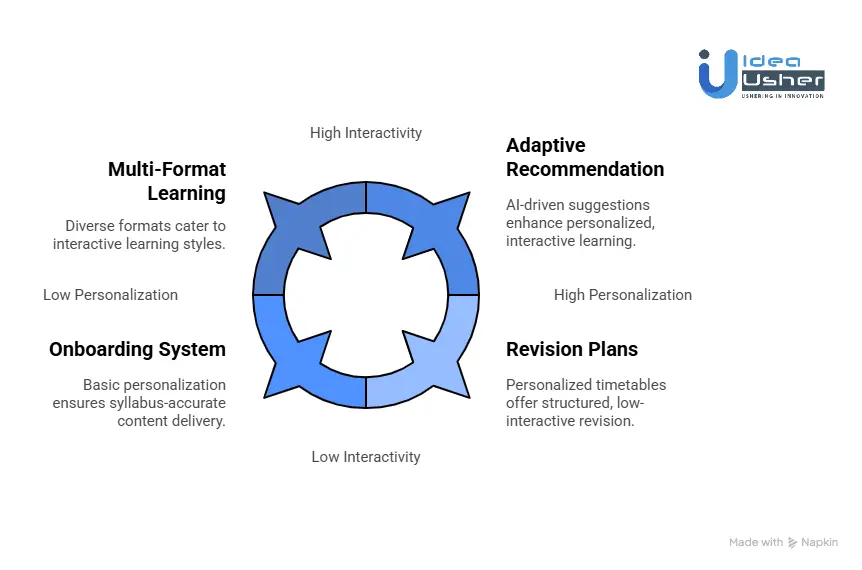
1. The Onboarding System
Bitesize doesn’t waste time on a generic landing page. The very first interaction asks the student to choose:
- Nation (England, Scotland, Wales, Northern Ireland)
- School Stage (KS3, GCSE, National 5, etc.)
- Exam Board (AQA, OCR, SQA, Edexcel, etc.)
This may look simple, but it’s the backbone of the whole product. Every subject, video, and quiz that follows is filtered through this selection. Students aren’t browsing, they’re stepping straight into a personalised syllabus. This cuts friction, builds trust, and ensures they only ever see content that actually counts toward their exams.
2. The Core Learning Model
The Bitesize name is literal. The app breaks every subject into:
- Subjects (e.g., GCSE Biology)
- Topics (e.g., Cell Biology)
- Guides (short explanations of one idea)
Each “guide” is deliberately short, just enough detail to teach one concept clearly.
Every guide follows a consistent rhythm:
Learn → Apply.
First, the student reads a clear explanation or watches a short animation. Immediately afterward, they complete a quick quiz or answer a few practice questions. This pairing is intentional: it forces active recall while the idea is fresh, strengthening memory without overwhelming the learner.
3. Multi-Format Learning
Bitesize doesn’t assume everyone learns the same way. For most key topics, students can switch between formats:
- Text guides and diagrams for readers and skimmers
- Videos and animations for visual learners
- Quizzes and mini-tests for active practice
- Flashcards and simple games for repetition that don’t feel like revising
This mix keeps the learning pace light and helps students find what works best for them.
4. The Revision Engine
Bitesize becomes a different product as exam season approaches.
Revision Plans
Students can build a personalised timetable that spreads revision sensibly across subjects and exam dates. This reduces the “where do I start?” problem that overwhelms many learners.
Progress Sharing
There’s a “Grown-Ups” section where students can send their progress and quiz results to a parent, carer, or teacher. It’s accountability made easy.
Exam Practice
Older learners get structured access to:
- Past paper-style questions
- Topic-specific practice banks
- Mark-scheme-style explanations
This step is crucial as students need to learn the content, but they must also learn how to answer the examiner’s questions.
Why the Simple Interface Works So Well?
Behind the calm, friendly interface is a serious technical system.
Metadata-Driven Content
Every piece of content has detailed tagging:
- Nation
- Exam board
- Subject
- Learning objective
This tagging system is why the app feels personalised without requiring a heavy AI layer.
Adaptive Recommendation
Bitesize is gradually adopting AI-powered recommendations. Quiz results can now influence what guides or videos appear next. It’s not fully personalised tutoring yet, but it’s a smart nudge toward more targeted revision.
Infrastructure Built for Stress
Traffic spikes during exam season are extreme. The platform relies on scalable cloud hosting, so it stays fast and stable even when millions of students log in at once. Reliability is part of the brand, so Bitesize can’t afford downtime in May and June.
What is the Business Model of the BBC Bitesize App?
The BBC Bitesize app follows a public-service model rather than a commercial one. All of its learning tools, including revision guides, quizzes, flashcards, and videos, are offered free of charge. The app is an extension of the BBC Bitesize website and is designed to support UK students from primary school through GCSEs with curriculum-aligned content.
Bitesize does not earn money from subscriptions, ads, or in-app purchases. It is funded by the BBC, which is primarily supported by the UK television licence fee.
- In 2021 to 2022, the licence fee contributed about £3.8 billion to the BBC’s total income, helping fund a wide range of public-service programming, including educational services such as Bitesize.
- In 2024, BBC Children’s and Education allocated £6 million to develop Bitesize further.
This investment focuses on improving personalised learning, strengthening content recommendations, and enhancing the digital experience while keeping the platform completely free.
Commercial Context
BBC Bitesize sits firmly within the BBC’s public-service mission and does not generate commercial revenue.
BBC Studios, the BBC’s commercial arm, earned around £1.8 billion in revenue and over £200 million in profit last year. These earnings come from global TV channels, programme sales, and subscription services such as BritBox rather than from educational products.
Because Bitesize is a public-service initiative, it does not seek outside investment or participate in funding rounds.
Impact and Usage
Although non-commercial, Bitesize is the most widely used online learning resource for school-age students in the United Kingdom.
In 2023, 47 percent of students relied on the platform for revision. Its reach grew even further during the COVID-19 pandemic, when the BBC launched Bitesize Daily, producing more than 200 hours of original educational programming and over 2,000 lessons to support remote learners.
How to Build a Learning App Like BBC Bitesize?
Building a learning app like BBC Bitesize starts with a solid curriculum model that aligns every module with precise learning targets and maintains technical consistency. The system then uses a modular content pipeline that handles text, video, and interactive content while maintaining stable performance across devices.
We have developed numerous learning apps, such as BBC Bitesize, for our clients over the years. Here’s how we do it.

1. Build a Curriculum Framework
We begin by designing a comprehensive curriculum framework tailored to your target grades, subjects, and learning outcomes. Every topic is broken down into granular learning objectives and organized using metadata, tags, and difficulty levels. This ensures your app’s content is structured, searchable, and ready for adaptive learning features.
2. Multi-Format Content Ecosystem
Next, we create a rich mix of content formats, clear text explanations, video scripts, animations, quizzes, and interactive activities. Our team ensures all materials meet educational and accessibility standards, including captions, alt-text, and inclusive design. This multi-format ecosystem becomes the core of your learning experience.
3. Adaptive Learning & Analytics Engine
We develop an adaptive engine that uses machine learning to personalize each learner’s path. The system analyzes performance and engagement to guide users to the right content at the right time. A mastery dashboard is also built to provide students, teachers, and administrators with insight into progress and areas that need support.
4. Media Delivery Infrastructure
To deliver seamless learning at scale, we architect a robust media infrastructure. This includes CDN integration for fast global access, optimized streaming for all connection speeds, and smart caching strategies. The result is smooth playback and quick load times, even during peak usage.
5. User Roles & Licensing Structure
We create tailored user experiences for students, teachers, school administrators, and enterprise clients. Each role has its own permissions and tools. Flexible licensing models are then implemented to support individual learners, classes, whole schools, or large organizations.
6. Testing & Optimization
Finally, we run educational usability testing with real users to validate clarity, engagement, and accessibility. We benchmark performance under real-world conditions, then launch controlled pilots to gather early feedback. Using this data, we continuously refine both content and technology to ensure long-term success.
How Much Revenue Can a Learning App Generate?
A commercial learning app in the K-12 or test-prep market can earn anything from a few million dollars a year to well over 100 million dollars in ARR once it reaches scale.
Actual revenue depends on audience size, how efficiently the company acquires users, and which monetization strategy it uses. Below is a realistic look at the three most common business models in education apps, along with clear revenue math.
1. Freemium / Subscription Model
This is the most common approach for direct-to-student learning apps. Basic content is free while features such as personalized learning paths, richer analytics, offline access, or ad-free studying require a subscription.
Key Assumptions
- Monthly Active Users (MAU): 2,000,000
- Conversion Rate: 2 percent
- Paying Users: 40,000
- Average Price: 10 dollars per month or roughly 120 dollars per year
Revenue
- MRR: 40,000 multiplied by 10 dollars equals 400,000 dollars per month
- ARR: 400,000 multiplied by 12 equals 4.8 million dollars per year
Example: Quizlet
Quizlet reports more than 60 million monthly active users globally. Analysts estimate that it has over one million paying subscribers. Even at a modest subscription price, Quizlet’s ARR likely exceeds $ 100 million, demonstrating how powerful this model becomes at scale.
2. B2B Licensing to Schools and Districts
Selling directly to schools, districts, or state-level buyers is often the most reliable and highest-value revenue stream. Contracts are predictable, renewal rates are strong, and pricing is based on the number of students covered.
Key Assumptions
- Price per Student: 10 to 30 dollars per year
- Mid-sized District: 50,000 students
- Chosen Price: 15 dollars per student per year
Revenue
- One District: 50,000 multiplied by 15 dollars equals 750,000 dollars per year
- Ten Similar Districts: 10 multiplied by 750,000 dollars equals 7.5 million dollars per year
Example: Seneca Learning
Most UK secondary schools use Seneca. Thousands of schools purchase the paid school package, typically priced between 500 and 2,000 pounds per year depending on size. This puts Seneca’s B2B revenue firmly in the multi-million dollar range.
3. Advertising-Supported Model
Apps that keep everything free can earn revenue through advertising. This approach requires large traffic volume, but once scaled it can produce significant revenue.
Key Assumptions
- MAU: 5,000,000
- Ad Impressions per User per Day: 3
- Monthly Impressions: 5 million users multiplied by 3 impressions per day multiplied by 30 days equals 450 million impressions
- eCPM: 3 dollars
Revenue
- Monthly Ad Revenue: 450 million impressions divided by 1,000 and multiplied by 3 dollars equals 1.35 million dollars
- Annual Ad Revenue: 1.35 million dollars multiplied by 12 equals 16.2 million dollars per year
Traffic Benchmark: Khan Academy
Khan Academy is funded through donations rather than ads, but its enormous traffic illustrates what is possible. If it were a for-profit company that ran advertisements, its traffic alone could generate hundreds of millions of dollars per year.

How to Design Learning Apps for 30% On-the-Go Learners?
According to studies, 30% of smartphone owners already use their phones for on-the-go learning. If you want to design for them, you might use short, modular lessons that load quickly and work reliably even in poor network conditions. You could also add thumb-friendly controls so users can learn confidently while they move.
1. Adopt the Five-Minute Lesson Mindset
For mobile learners, the fundamental unit of progress is not a lecture or a long chapter. It is a single, tightly focused idea that can be understood and reinforced in just a few minutes.
Design Principle: Atomic Content
Break topics into the smallest meaningful pieces. Instead of offering a long module on photosynthesis, break it into short, standalone explanations such as “What Photosynthesis Does,” “Why Chlorophyll Matters,” or “How Light Reactions Work.”
UI/UX Execution
- Use a card-based layout where each card represents one micro-concept.
- Clearly display the time required to complete each piece, such as “2-minute read” or “3-question quiz.”
- Include a visible progress tracker so users feel momentum even when learning in short bursts.
2. Build for Thumb-Only Navigation
On-the-go learners often hold their phone with one hand. If essential actions are out of thumb reach, they will feel friction immediately.
Design Principle: Reachability
Place primary actions within the lower half of the screen where the thumb naturally rests.
UI/UX Execution
- Use a bottom navigation bar instead of hiding system controls in a top-corner menu.
- Ensure tap targets are large and easy to hit, ideally 44 x 44 pixels or larger.
- Support intuitive gestures such as swiping left or right to move between cards or lessons.
3. Design with Interruptions in Mind
People learning in motion face constant disruptions. A train announcement, a coworker walking over, or a child needing attention can break focus instantly. Your app needs to absorb these interruptions rather than punish the user for them.
Design Principle: State Persistence
The app should remember the exact point the user left off, regardless of the activity.
UI/UX Execution
- Provide automatic saving across every type of interaction.
- Offer a clear “Resume” option when users reopen the app so they can jump straight back into the previous task.
- Use local caching to maintain state even if the connection drops unexpectedly.
4. Treat Offline Access as a Core Experience
Many learners rely on your app during periods of limited or unstable connectivity. If the app fails when the signal drops, you lose the moment and the user’s trust.
Design Principle: Offline-First Thinking
Make it easy for users to prepare for offline use and access content without frustration.
UI/UX Execution
- Add simple, prominent “Download” buttons on every lesson or topic.
- Display a small icon or label on downloaded content so users instantly know what is available offline.
- Provide a dedicated “Downloads” section where offline materials are organized and easy to find.
Common Challenges Create a Learning App Like BBC Bitesize
At Idea Usher, we have spent years taking EdTech ideas from early concept to real classrooms, so we know what truly holds a project back. Building something as dependable as BBC Bitesize requires strong architecture and carefully engineered systems. We study how students and teachers actually use these tools so the platform can perform reliably and scale when it matters.
Below are the most common challenges we encounter and the strategies we have refined to solve them.
1. Content Quality Control and Curriculum Alignment
Large EdTech platforms often work with dozens of writers, editors, agencies, and freelancers. With so many contributors, maintaining consistent quality and ensuring perfect alignment with multiple curricula and exam boards becomes incredibly difficult. One inaccurate fact or misaligned learning outcome is enough to break user trust.
How We Tackle It:
We transform content creation into a tightly controlled, data-backed system.
Granular Taxonomy from Day One:
We build a custom CMS where every asset is tagged to specific Learning Objectives mapped directly to curriculum and exam board codes. Nothing exists in the system without a clear educational purpose.
Structured Workflow with Approval Gates:
Each piece of content follows a defined path:
Curriculum Expert sets the LO → Writer produces the content → SME verifies accuracy → Editor checks clarity, alignment, and style.
Automated Auditing Tools:
Our CMS automatically flags assets that are not linked to an LO or that rely on curriculum standards that have recently changed. This ensures continuous, real-time alignment.
2. Scaling the Platform for Traffic Surges
Educational apps do not have predictable, steady usage. They experience dramatic spikes, especially right before major exams or during national revision periods. If the platform slows down or crashes at these moments, it loses credibility instantly.
How We Tackle It:
We design for the heaviest traffic day of the year, not the average weekday.
- Auto-Scaling Compute Resources: With cloud-native and serverless infrastructure (AWS Lambda, Kubernetes, etc.), the system automatically adds capacity the moment traffic increases.
- Global CDNs for Fast Delivery: Videos, images, and interactive content are cached worldwide, reducing server load and ensuring lightning-fast access for students everywhere.
- Optimized Databases and Caching Layers: We implement Redis and other in-memory stores to handle high-frequency quiz requests and session data, preventing database strain during peak usage.
3. Ensuring Personalization Without Overwhelming
Personalization is essential for effective learning, but poorly implemented adaptive systems can feel intrusive or confusing. Students may become overwhelmed by too many recommendations or complex skill maps.
How We Tackle It:
We keep the interface simple while letting the intelligence run behind the scenes.
- The “Next Best Action” Model: Our AI evaluates progress and mastery (using BKT and PyTorch models) and surfaces only the single most valuable activity to continue learning. Students simply tap “Continue Learning,” avoiding cognitive overload.
- Positive, Clear Progress Framing: Instead of raw percentages, we use friendly, meaningful cues such as “You’re building strong momentum in Biology” or “One more quick quiz will help you master this topic.”
- Controlled Choice: With 2–3 curated options, students feel in control without being overwhelmed by infinite paths.
4. Balancing the Cost of Multimedia Production
Premium videos, animations, and interactive games dramatically improve engagement, but they are time-consuming and expensive to produce, especially when covering multiple subjects and grade levels.
How We Tackle It:
We focus resources where they matter most.
- The “Core Concept” Filter: We use data insights to determine which topics cause the most student struggle. These receive top-tier multimedia production.
- Cost-Efficient Interactive Tools: For lower-priority topics, tools like H5P enable us to quickly and affordably produce engaging quizzes, timelines, and activities.
- Phased Content Rollouts: We help clients launch with a strong baseline set of premium assets. The early traction then funds additional content tiers.

Tools & APIs for a Learning App Like BBC Bitesize
Creating a learning platform on the level of BBC Bitesize demands far more than strong educational content. It requires an ecosystem of technologies that can deliver lessons quickly, adapt to each learner, and support thousands of resources with stability and scale. For anyone building a serious EdTech product, choosing the right tools, frameworks, and APIs lays the foundation for long-term success.
Below is a clear breakdown of the core technology pillars you should consider.
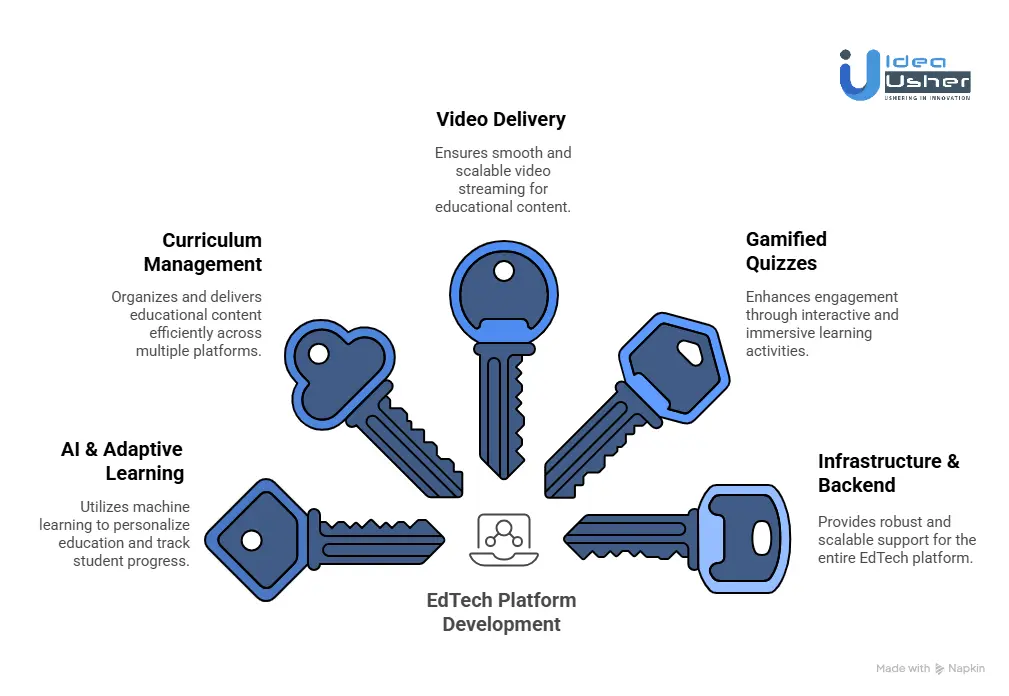
1. AI & Adaptive Learning
To move past a static learning library and into personalized education, your app needs an adaptive engine that understands each student’s progress.
TensorFlow and PyTorch
These two open-source machine learning libraries are the standard for building adaptive models. They help you train systems that recognize learning patterns, identify knowledge gaps, and recommend what a student should learn next.
Bayesian Knowledge Tracing
BKT is a proven technique for modeling how students acquire skills over time. Instead of simply recording correct or incorrect answers, it estimates how likely a student has mastered a concept and when they need reinforcement.
2. Curriculum & Content Management
Educational platforms rely on large, structured libraries of videos, articles, quizzes, and lesson plans. Managing this at scale requires a CMS designed specifically for complex learning content.
Strapi CMS and Contentful
These headless CMS platforms separate content from presentation, allowing you to serve the same lesson to your website, mobile app, or TV app without duplicating work. They support rich tagging, relationships, and metadata, which is essential for mapping learning resources to objectives and key stages.
Custom Taxonomy-Based CMS
Some EdTech products require more precise control than any off-the-shelf CMS can provide. A custom CMS lets you create detailed taxonomies that align content to exam boards, skill levels, and curriculum structures.
3. Video & Media Delivery
Video is one of the strongest learning mediums, but delivering it at scale requires professional infrastructure.
- AWS CloudFront and Azure Media Services: These services handle everything from video encoding to global distribution. They support adaptive bitrate streaming, ensuring students get smooth playback regardless of device or internet speed.
- Vimeo OTT: A good option if you want a managed, ready-to-launch video delivery system. It includes tools for organizing lessons and even supports monetization, which can open new revenue channels.
4. Gamified Quiz Engines
Interactive quizzes and activities are where students turn passive knowledge into real understanding.
- H5P: A fast way to build browser-based interactive content such as drag-and-drop tasks, quizzes, and interactive videos. It integrates easily with modern learning platforms.
- Unity WebGL: If you want immersive simulations such as virtual labs or high-fidelity games, Unity allows you to deploy them straight to the browser through WebGL.
- Custom HTML5 Engines: For complete control over look, behavior, and data tracking, you can build your own quiz or activity engine using JavaScript frameworks like React or Vue.
5. Infrastructure & Backend
The best learning tools fail instantly if the backend cannot support heavy traffic or if downtime occurs during peak study periods. A solid infrastructure is essential.
- AWS and Azure: These platforms offer everything from server hosting and managed databases to CDNs and serverless functions. They are built for large-scale, mission-critical applications.
- Kubernetes: For products built on microservices, Kubernetes automates deployment and scaling, ensuring your app can handle sudden spikes, such as exam season rush.
- Firebase: Ideal for rapid prototyping and MVPs, Firebase provides authentication, real-time databases, hosting, and more without requiring a complex backend setup.
6. Infrastructure & Backend
This is the bedrock that holds everything together. Your choice here determines your app’s reliability, scalability, and security.
- AWS / Azure: These comprehensive cloud platforms provide all the necessary services under one roof: scalable server hosting (EC2/VMs), databases (RDS), serverless functions (Lambda), and the CDNs mentioned earlier. They are built for enterprise-scale applications.
- Kubernetes: For managing complex, microservices-based applications, Kubernetes is the essential orchestration tool. It automates deployment, scaling, and management, ensuring your app can handle traffic spikes with zero downtime.
- Firebase: A fantastic option for building a Minimum Viable Product (MVP) rapidly. It provides a suite of easy-to-use tools for authentication, real-time databases, and hosting, allowing small teams to build a functional prototype without managing complex backend infrastructure.
Conclusion
Platforms shaped like BBC Bitesize point to the future of scalable digital education because they deliver structured pathways that guide learners with clarity while still allowing adaptive systems to personalise each step, and this balance helps organisations drive stronger engagement, better retention, and steady revenue as governments, publishers, and businesses look for models that can grow quickly and still maintain technical precision.
Looking to Develop a Learning App Like BBC Bitesize?
Idea Usher can help you build a learning app like BBC Bitesize by designing an adaptive architecture that responds intelligently to each student. With over 500,000 hours of coding experience and a team of ex-MAANG/FAANG developers, we will shape AI models that personalise study paths and maintain stable performance under heavy load.
You will also get a scalable backend that can reliably support rapid feature growth and keep operations smooth.
- Go beyond static content with AI-driven learning paths.
- Build trust with real-time progress dashboards for students, parents, and schools.
- Handle exam-day traffic spikes with ease.
Ready to build the future of education? Check out our latest projects to see our expertise in action.
Work with Ex-MAANG developers to build next-gen apps schedule your consultation now
FAQs
A1: Building an app like BBC Bitesize typically takes around six to twelve months, depending on complexity, content volume, and platform choice. A basic MVP with core features may be ready sooner, but a full platform with assessments, gamification, and analytics typically takes longer. Development teams may also need additional time for QA testing, accessibility compliance, and content migration, especially if the project aims to scale to multiple grade levels or subjects.
Q2: Both options are viable, and the decision will depend on your business strategy, licensing budget, and timeline. Original content offers full creative freedom and can align better with your brand, but it requires more time and resources. Licensed content allows you to move faster and may provide instant credibility, but the terms might limit updates, monetisation, and distribution in certain regions..
A3: A solid MVP for a platform like BBC Bitesize should include user accounts, learning modules, curriculum mapping, video content support, basic assessments, progress tracking, and admin control for content updates. Features such as AI tutors, gamification, and community learning may be added later once user behaviour patterns are clear and the platform has reached product-market fit.
A3: A solid MVP for a platform like BBC Bitesize should include user accounts, learning modules, curriculum mapping, video content support, basic assessments, progress tracking, and admin control for content updates. Features such as AI tutors, gamification, and community learning may be added later once user behaviour patterns are clear and the platform has reached product-market fit.
A4: The cost to build an app like BBC Bitesize varies based on features, content volume, platform type, and the technology stack, and it may increase when AI-powered learning, adaptive assessments, and interactive modules are included because those areas need specialised development and testing. A phased development approach may help control spending while giving space to refine the product based on real user engagement and performance data.






